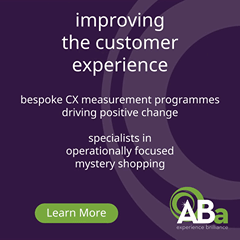Review: Digital Transformation Strategy
Long-term success for retailers will be determined by their ability to maintain a flexible and agile mind-set while maintaining a focus on the key underlying business objective because ongoing digital developments constantly change the retail environment.
Speaking at The Retail Bulletin Digital Transformation Strategy 2021 virtual conference Aaron Chatterley, founder of Feelunique, highlighted how the evolution of his business since its founding 16 years ago has been underpinned by a “laser focus” on the site as a destination for health and beauty while being open to change.
“We’ve been very nimble, despite our size, and also been adaptable. You can’t predict the future or new technologies so you need to maintain dynamism and openness to change. You must be adaptable, nimble and fast,” he suggests.
Adopting marketplace model
Reflective of this is the addition of a marketplace element to the Feelunique business through which brands can sell their products. “We’re very range-focused so try to have something for everyone – with a broad offer. If we didn’t supply certain products then the customers would go elsewhere – hence the marketplace as we can only hold so much inventory ourselves,” says Chatterley.
The marketplace model is fundamental to the Secret Sales proposition that seeks to address excess products in the fashion category by hosting brands on its platform, which enables them to sell their overstocks at a discounted price.
Dan Ashcroft, director of partner services & marketplace, says the appeal of Secret Sales to the likes of brands including Ted Baker and Jigsaw is that it is “brand-enhancing, not brand detracting”. He suggests some brands have found it hard to go online and that Secret Sales has helped them make this move and given them a quality experience in which to sell their excess inventory.
Creating the right environment
“There will be growth in specialised marketplaces over the next 10-20 years whether it is going to Secret Sales or to Feelunique rather than to eBay or Amazon. Trying to buy clothes on Amazon is not good. We offer brands more control over their products and protect their brand image. We enable them to surface their products from their stores and also their warehouses on our marketplace,” he explains.
Callum Campbell, CEO of Linnworks, agrees there is great appeal with marketplaces – helped by the fact he says 90% of shopping-related searches begin on such a platform: “It will only strengthen as it’s compelling for customers and there is also the flywheel effect. They will therefore grab more market share.”
Importance of physical stores
For Feelunique physical stores are still very important. Although they only account for 5% of turnover they have helped the company attract certain high-end brands such as Chanel, and in addition to that, to also meet the selective distribution requirements. They have also driven more customers to its online store.
Stores have certainly been important to Sharon Solis, head of retail at Astrid & Miyu, who suggests: “They need to play on being individual and not generic. You can have a base and then adapt this to the individual areas [where they are located]. As a brand we’ve a personal, unique model – we sell jewellery but also do piercings and tattoos. We also champion other smaller brands around us in our store in Notting Hill.”
The company also uses social media to connect people to its stores, which Solis says are very Instagrammable units: “A small area is set up for posting on social media so we engage with both channels.”
Injecting experience into stores
Emma Siveyer, digital products lead at Three, has also been developing the capabilities within the Three stores to add to the experience, including incorporating Discovery sections for finding out about new devices, bookable sessions for tutorials on specific device-related topics, and Three Store Now that uses the solution from Hero to link in-store employees with customers at home via live chat and video in order to virtually demo products and handle queries.
Solutions such as Hero have become incredibly popular since Covid-19, according to Paul Rogers, e-commerce consultant at Klevu, who says the availability of such clever technology makes it a “great time to be a brand” – with plenty of competition among the tech providers.
Mike Dowson, commercial director at Trust Systems, says such initiatives are vital for retailers but that it is imperative they ensure the underlying technology infrastructure is sufficiently robust to handle the increased demands on it. He cites the implementation of digital signage in-store, which can only be used to its maximum effect by utilising high bandwidth and Wi-Fi rather than relying on 4G routers that can all too often lead to connectivity issues.
Boosting personalisation
With robust infrastructures in place he says retailers should look to sweat their assets – including the devices they use in-store, with mobile POS for instance being used for clientelling purposes that can deliver a much more personalised experience for customers.
Personalisation is certainly an important aspect today as technology provides retailers with great opportunities in this area. Nidhima Kohli, CEO of My Beauty Matches (MBM), says there has been a rise in the use of artificial intelligence (AI) solutions – including within the beauty category – that involve customers doing online quizzes that then determine what products they require. “These beauty matching engines encompass all the customers’ characteristics in order to provide one-on-one type recommendations.”
For MBM the impact can be impressive, according to Kohli, with average order values on its site jumping 35% in two months and conversion rates can enjoy boosts of 50-80% as the use of AI by the quiz element means it is not “static” but constantly changes based on accumulated knowledge and changed circumstances.
Increased use of AR
She also points to the increased use of augmented reality (AR) for virtually trying on make-up and for helping people choose hair colourings, but she questions the return on investment for some implementations. There have been no questions over the value derived from the use of AR at both sofa specialist DFS and eyewear retailer CADDIS.
Steve Genzler, VP of operations at CADDIS, says: “I had written off the idea of using AR and I was shocked by the demo I saw from [AR specialist] Vertebrae. It was incredibly close to the real thing. I originally looked at it to mitigate returns, as you’ll generate more returns if you are not accurate [with sizing, colour and style] online, and they have dropped substantially.”
What he also found was that the solution increased conversion. “If customers do the virtual try-ons then there is 70% more chance of conversion. We’ve been very pleased with it. It’s also not been difficult to get up and running,” says Genzler.
Likewise, at DFS the experience has been positive. James Vernon, head of online at DFS, says the company began playing around with AR five years ago since it recognised 85% of sofa research is done online before a store visit so such technology has had obvious appeal to the retailer.
Using Vertebrae technology has enabled it to progress with the key objective of improving the customer journey across the various channels. Vince Cacace, CEO of Vertebrae, says the core components retailers have to engage with when implementing AR are: the asset creation in terms of digital images, the user experience, and the technology integration.”
Words by Glynn Davis
Join us at Digital Transformation Strategy Part 2 on 29 and 30 June. Find out more and register for your free place here
If you missed Part 1, access the recording here














